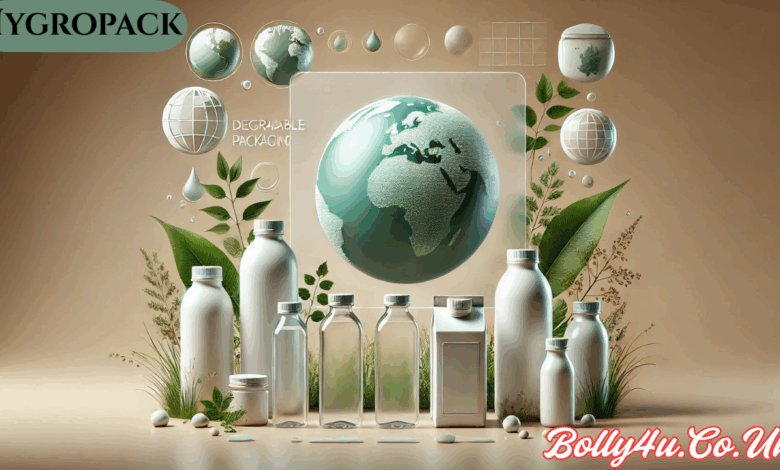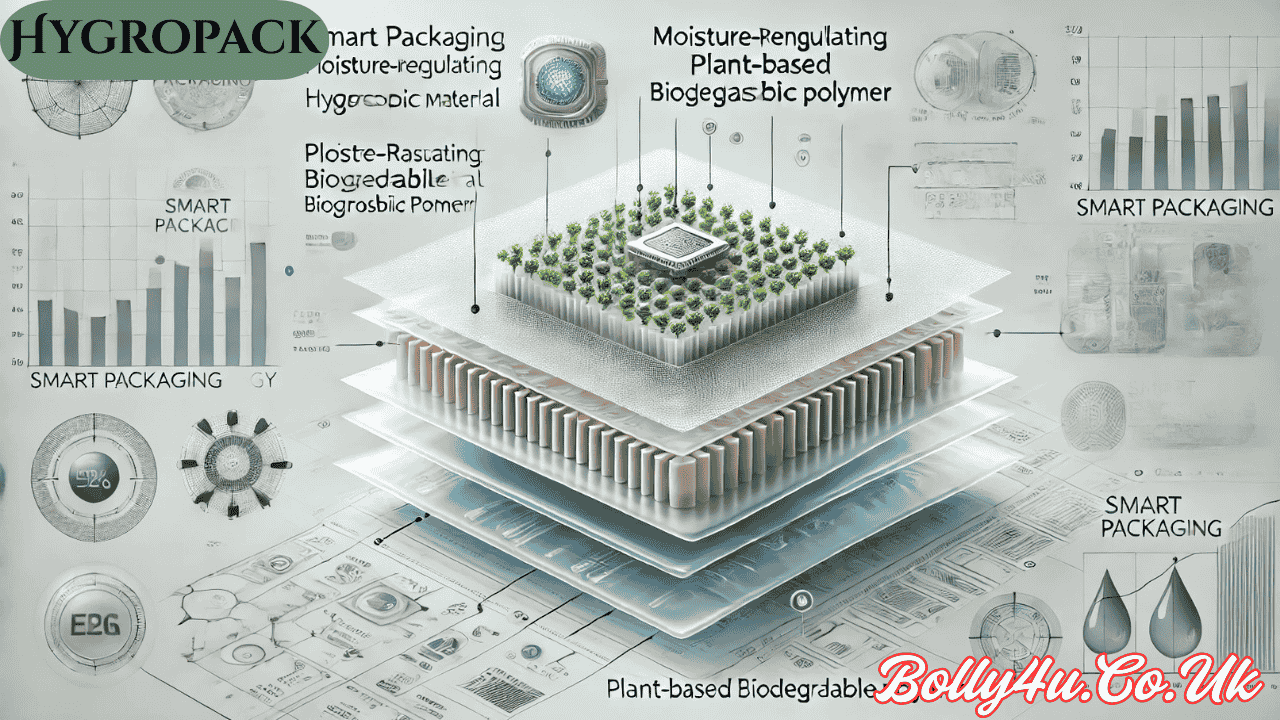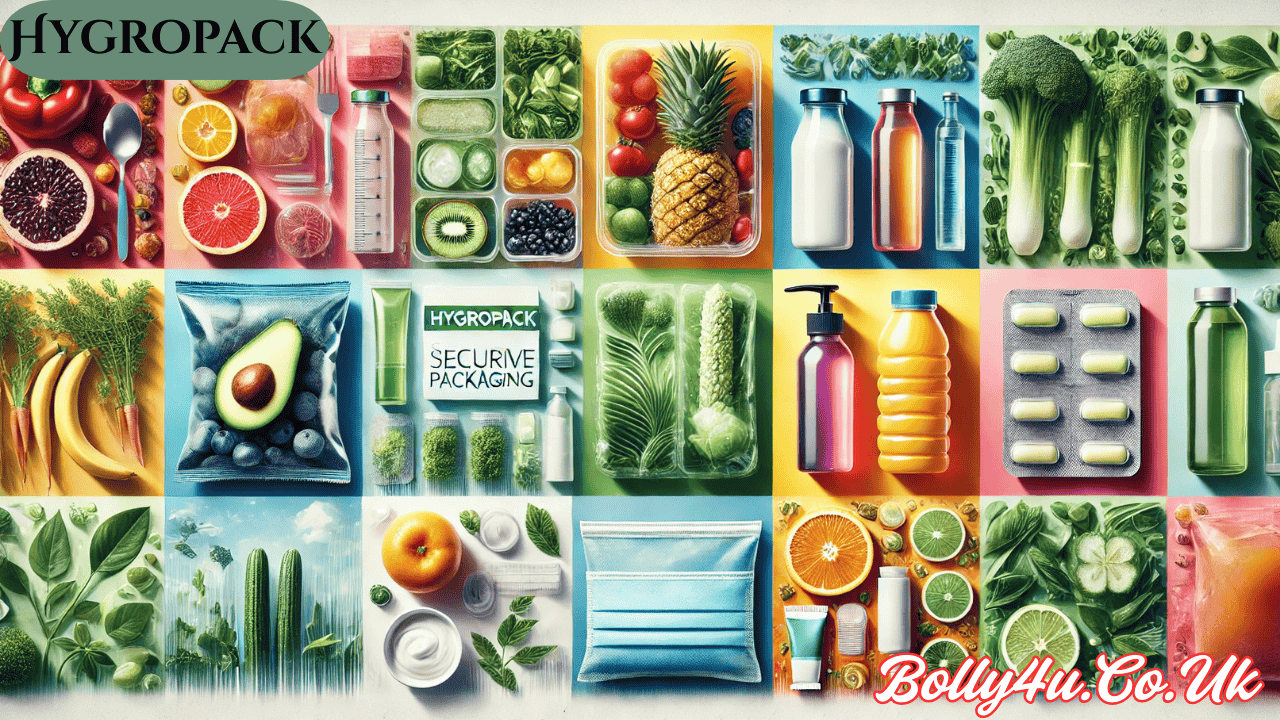Hygropack: Revolutionizing Hydration and Sustainable Packaging Solutions

Introduction to Hygropack: The Future of Hydration and Eco-Friendly Packaging
In today’s fast-paced world, sustainability and convenience are two critical factors driving innovation across industries. One such groundbreaking advancement is Hygropack, a revolutionary concept that merges hydration technology with eco-friendly packaging solutions. Hygropack is designed to address the growing concerns around plastic waste while ensuring optimal hydration for consumers on the go. Whether used in food packaging, beverage containers, or medical supplies, Hygropack offers a sustainable alternative that reduces environmental impact without compromising functionality.
The name Hygropack is derived from “hygro,” meaning moisture, and “pack,” referring to packaging. This innovative approach focuses on maintaining hydration levels in products while utilizing biodegradable or reusable materials. As global awareness of climate change and plastic pollution rises, Hygropack presents a viable solution that aligns with the principles of a circular economy. Companies and consumers alike are increasingly seeking sustainable alternatives, and Hygropack stands at the forefront of this movement, offering a smarter way to package and preserve products.
How Hygropack Works: The Science Behind Sustainable Hydration
At its core, Hygropack leverages advanced material science to create packaging that retains moisture efficiently. Traditional plastic packaging often fails to preserve the freshness of perishable goods, leading to food waste and increased carbon footprints. Hygropack, however, integrates moisture-regulating technologies that extend shelf life while minimizing environmental harm.
One of the key technologies used in Hygropack is hygroscopic materials, which naturally absorb and release water vapor to maintain an optimal humidity level inside the packaging. This is particularly beneficial for food items like fruits, vegetables, and baked goods, which are prone to drying out or becoming soggy. Additionally, Hygropack can incorporate plant-based biopolymers, such as PLA (polylactic acid), which are compostable and derived from renewable resources like corn starch or sugarcane.
Another innovative aspect of Hygropack is its potential for smart packaging. By embedding sensors, the packaging can indicate product freshness, temperature changes, or even hydration levels, ensuring consumers receive the best-quality products. This level of intelligence not only enhances user experience but also reduces unnecessary waste by preventing the premature disposal of still-fresh goods.
Applications of Hygropack: From Food to Pharmaceuticals
The versatility of Hygropack makes it applicable across multiple industries, each benefiting from its sustainable and functional properties.

1. Food and Beverage Industry
In the food sector, Hygropack can significantly reduce spoilage rates. Fresh produce, meats, and dairy products often suffer from moisture loss or excess condensation, leading to degradation. Hygropack’s moisture-control capabilities ensure that food stays fresher for longer, reducing both waste and the need for preservatives. For beverages, Hygropack can be used to create biodegradable bottles or cartons that maintain liquid integrity without leaching harmful chemicals.
2. Pharmaceutical and Healthcare
Medicines and medical supplies often require strict humidity control to maintain efficacy. Hygropack can be engineered to provide a stable internal environment, protecting sensitive drugs from moisture damage. This is especially crucial for vaccines, antibiotics, and other temperature-sensitive medications that need reliable packaging solutions.
3. Cosmetics and Personal Care
Many beauty products, such as creams and serums, degrade when exposed to air and humidity. Hygropack’s airtight and moisture-regulating design ensures that these products remain effective until the last use, enhancing customer satisfaction and reducing returns due to spoiled goods.
4. Agricultural and Horticultural Uses
Seed packets, plant wraps, and soil coverings can benefit from Hygropack’s moisture-retention properties. By maintaining ideal hydration levels, farmers and gardeners can improve germination rates and reduce water usage, contributing to more sustainable agricultural practices.
Environmental Impact: Why Hygropack is a Game-Changer
The environmental benefits of Hygropack cannot be overstated. Traditional plastic packaging contributes significantly to pollution, with millions of tons ending up in landfills and oceans each year. Hygropack’s biodegradable and compostable materials break down naturally, reducing long-term ecological harm.
Moreover, Hygropack supports the zero-waste movement by encouraging reusable and recyclable packaging systems. Some versions of the Hygro pack can be designed for multiple uses, further minimizing waste. Companies adopting Hygropack can also enhance their brand image by showcasing their commitment to sustainability, appealing to eco-conscious consumers.
Another critical advantage is the reduction in carbon emissions. Since Hygropack materials often come from renewable sources, their production emits fewer greenhouse gases compared to petroleum-based plastics. Additionally, by extending the shelf life of perishable goods, Hygropack helps lower the frequency of transportation and refrigeration needs, further cutting down energy consumption.
Challenges and Future Prospects of Hygropack
Despite its numerous advantages, Hygropack faces some challenges that must be addressed for widespread adoption.

1. Cost and Scalability
Currently, biodegradable and smart packaging solutions tend to be more expensive than conventional plastics. Scaling up production to meet global demand while keeping costs competitive remains a hurdle. However, as technology advances and more companies invest in sustainable packaging, economies of scale could make Hygropack more affordable.
2. Consumer Awareness and Behavior
Many consumers are still unaware of the benefits of sustainable packaging, or may resist change due to convenience habits. Educating the public on the long-term advantages of Hygropack will be crucial in driving its acceptance.
3. Regulatory and Infrastructure Support
Governments and industries must collaborate to establish regulations that promote biodegradable packaging. Improved composting facilities and recycling programs will also be necessary to ensure Hygropack’s full potential is realized.
Looking ahead, the future of Hygro pack is promising. With continuous research and innovation, we can expect even more advanced versions of the Hygro pack that integrate AI-driven monitoring, self-healing materials, and enhanced biodegradability. As sustainability becomes a non-negotiable priority, Hygro pack is poised to lead the packaging revolution, offering a greener, smarter way to preserve and protect our planet’s resources.
Conclusion: Embracing Hygropack for a Sustainable Tomorrow
Hygropack represents a transformative shift in how we approach packaging and hydration. By combining cutting-edge material science with eco-conscious design, it addresses some of the most pressing environmental challenges of our time. From reducing plastic waste to enhancing product longevity, Hygropack offers a multifaceted solution that benefits businesses, consumers, and the planet.
As industries and individuals increasingly prioritize sustainability, Hygro pack stands as a beacon of innovation, proving that functionality and environmental responsibility can go hand in hand. The journey toward a zero-waste future is complex, but with solutions like Hygro pack, we are one step closer to achieving a healthier, more sustainable world.
Also Read: getwildfulnesss.com: A Deep Dive into Nature, Wellness, and Adventure



